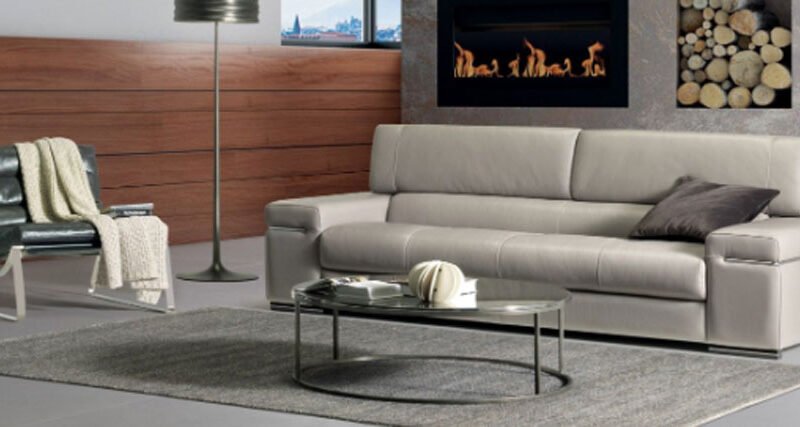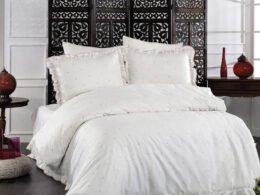Understanding Natuzzi leather sofas involves exploring the craftsmanship, design, and value behind each piece. These sofas are renowned for combining Italian artistry with comfort, offering both visual appeal and long-lasting durability. Made with high-quality materials, including premium-grade leather, they provide a blend of style and substance that elevates any living area.
In terms of design, Natuzzi leather sofas are available in a broad variety of shapes and configurations to suit diverse interiors. From clean, modern lines to more classic contours, each model demonstrates a commitment to elegant, functional living. Some options also feature adjustable elements for enhanced comfort and convenience.
Before purchasing, it is wise to consider the size of your room, how many people will use the sofa regularly, and how much maintenance you are comfortable handling. Leather demands occasional care, but its resilience typically justifies the effort. Overall, Natuzzi leather sofas offer a refined balance between sophistication and practicality.
Introduction to Natuzzi: Brand history and manufacturing background
Natuzzi was founded in 1959 by Pasquale Natuzzi in Southern Italy. Originally a small workshop, the brand quickly expanded due to its commitment to innovation, craftsmanship, and design. Over the decades, it grew into an internationally respected name in furniture manufacturing, known for its Italian roots and global reach.
Today, Natuzzi manages production through state-of-the-art facilities that reflect its dedication to quality and sustainability. Each stage—from selecting raw materials to final inspections—is carefully overseen to ensure products meet rigorous standards. The company blends traditional techniques with modern technology to create pieces that are both stylish and reliable.
Natuzzi leather sofas are a prime example of the brand’s expertise. They represent decades of experience and an ongoing focus on comfort, aesthetics, and durability. With manufacturing hubs in Italy and other parts of the world, Natuzzi maintains control over design and production, offering customers well-crafted furniture with enduring appeal.
Leather types used in Natuzzi sofas: Key characteristics and differences
Natuzzi offers a variety of leather types, each selected to reflect high standards of beauty, comfort, and durability. The company primarily uses genuine leather sourced from top-quality hides, ensuring natural texture and resilience. These materials are treated with advanced techniques to preserve their softness and appearance over time.
Among the options available, full-grain leather is the most natural and durable. It retains the hide’s original surface, including subtle markings, which give each piece a unique character. Semi-aniline leather offers a balance between softness and protection, featuring a light surface coating that helps resist stains while maintaining a natural feel.
Corrected-grain leather is another type commonly used in Natuzzi leather sofas. It undergoes light buffing and finishing to achieve a consistent look while still offering flexibility and strength. Each type suits different preferences, so choosing the right one depends on your priorities—whether it is appearance, touch, or ease of maintenance.
Structure and craftsmanship: Frame, suspension, and padding quality
The structure of Natuzzi leather sofas reflects a focus on strength, stability, and enduring quality. Each sofa begins with a solid frame, typically constructed from seasoned hardwood. This foundation provides long-term durability and helps maintain the shape and balance of the piece through years of regular use.
Suspension systems in Natuzzi leather sofas are designed to offer consistent support. High-resilience elastic webbing is commonly used to distribute weight evenly and reduce sagging over time. This method promotes comfort while helping preserve the sofa’s overall form and function.
Padding is equally important in defining comfort and style. Natuzzi uses high-density polyurethane foam that adapts to the body without losing shape. In some models, layers of memory foam or fiberfill are added to improve softness and ergonomic support.
Together, these components reflect refined craftsmanship aimed at combining visual elegance with practical performance, making each sofa a lasting and attractive addition to modern interiors.
Design philosophy: Aesthetic influences and product range
Natuzzi’s design philosophy blends Italian heritage with modern global influences, resulting in a distinctive style that is both timeless and contemporary. The brand draws inspiration from art, architecture, and the natural landscape of Southern Italy. These elements contribute to refined lines, harmonious proportions, and balanced compositions throughout the collection.
The product range is broad, with options that meet various design preferences—from sleek minimalism to warmer traditional aesthetics. Materials are chosen not only for appearance but also for texture and longevity, supporting Natuzzi’s commitment to beauty with function. Elegant stitching, soft contours, and attention to detail reflect the care behind every creation.
Natuzzi leather sofas exemplify this philosophy. They are crafted to complement diverse spaces, from urban apartments to spacious family homes, without sacrificing comfort or design integrity. By offering both variety and cohesion, Natuzzi succeeds in delivering furniture that enhances the visual and functional quality of interior environments.
Comfort and ergonomics: Evaluating seating experience and support
Comfort and ergonomics play a vital role in defining the overall value of any seating furniture. In the case of premium options like Natuzzi leather sofas, these qualities are the result of thoughtful engineering and design. Every element—from seat depth to backrest angle—is developed to support natural posture and reduce strain during extended use.
High-resilience foam padding is often used to offer consistent support while adapting gently to body contours. Some models include memory foam layers or additional cushioning in high-pressure zones such as lumbar and headrest areas. This ensures a pleasant seating experience that combines softness with reliable structure.
The ergonomic design of Natuzzi leather sofas also includes features such as adjustable headrests, motion reclining systems, and tailored seat heights. These considerations aim to enhance both short-term relaxation and long-term health by encouraging better alignment and circulation. The result is seating that supports daily comfort with enduring appeal.
Durability and care: Cleaning guidelines and leather maintenance
Durability and proper care are essential to maintaining the long-lasting appeal of leather furniture. Natuzzi leather sofas are constructed using high-quality materials designed to withstand daily use while retaining their elegant appearance. With thoughtful maintenance, these pieces can remain functional and attractive for many years.
To preserve the leather’s finish and suppleness, it is recommended to dust the surface regularly using a soft cloth. Spills should be addressed promptly with a clean, dry towel. Avoid using harsh cleaners or excessive moisture, as these can damage the leather’s natural texture and color.
For deeper cleaning, use leather-specific products sparingly and follow manufacturer instructions. Conditioning treatments applied a few times a year can help keep the leather hydrated and prevent cracking. It is also advisable to keep Natuzzi leather sofas away from direct sunlight or heat sources, as prolonged exposure can lead to fading or stiffness. Responsible care ensures their continued comfort and beauty.
Sustainability practices in Natuzzi’s production process
Sustainability is a key principle in Natuzzi’s manufacturing approach, guiding decisions from material sourcing to final delivery. The company aims to reduce environmental impact by adopting energy-efficient technologies, limiting waste, and selecting responsible suppliers. Recycled materials and renewable resources are often used where possible, aligning with global standards for ecological protection.
Natuzzi follows strict protocols during the production of its furniture, including careful management of emissions and waste disposal. Water-based adhesives and low-impact dyes are used to lower the presence of harmful substances. The company also invests in solar energy and advanced machinery to reduce overall energy consumption.
In addition to environmental considerations, Natuzzi promotes ethical labor practices and local community involvement. These actions reflect a commitment to long-term sustainability rather than short-term efficiency. For consumers who value responsibility alongside style and comfort, Natuzzi leather sofas represent a thoughtful choice that supports both environmental preservation and social responsibility.
Cost analysis: Price brackets and value for money
Natuzzi leather sofas are positioned in the mid-to-high-end price range, reflecting their craftsmanship, material quality, and design heritage. While prices vary depending on model, features, and leather type, most pieces offer a balance between luxury and long-term value.
Lower-priced options within the collection may appeal to those seeking refined style without extensive customization. These models still maintain the durability and comfort associated with the brand. Higher-priced selections often include advanced mechanisms, premium leather finishes, and greater design flexibility.
When evaluating value for money, it is important to consider the sofa’s lifespan, aesthetic appeal, and everyday comfort. Natuzzi leather sofas are built to endure, which can reduce the need for frequent replacements. Their ability to retain structure and appearance over time contributes to a stronger return on investment.
Buying tips: How to select the right Natuzzi sofa for your space and needs
Selecting the right Natuzzi leather sofa requires thoughtful consideration of space, function, and personal preferences. Begin by measuring your room accurately, accounting for walking paths, doorways, and other furniture. This ensures the sofa fits without overcrowding the area or disrupting natural flow.
Next, identify how the sofa will be used. For everyday lounging, deeper seats and soft cushions may be ideal. If formal gatherings are more common, a structured model with upright support might be preferable. Also consider the number of users to determine the appropriate size—whether a compact two-seater or a spacious sectional.










